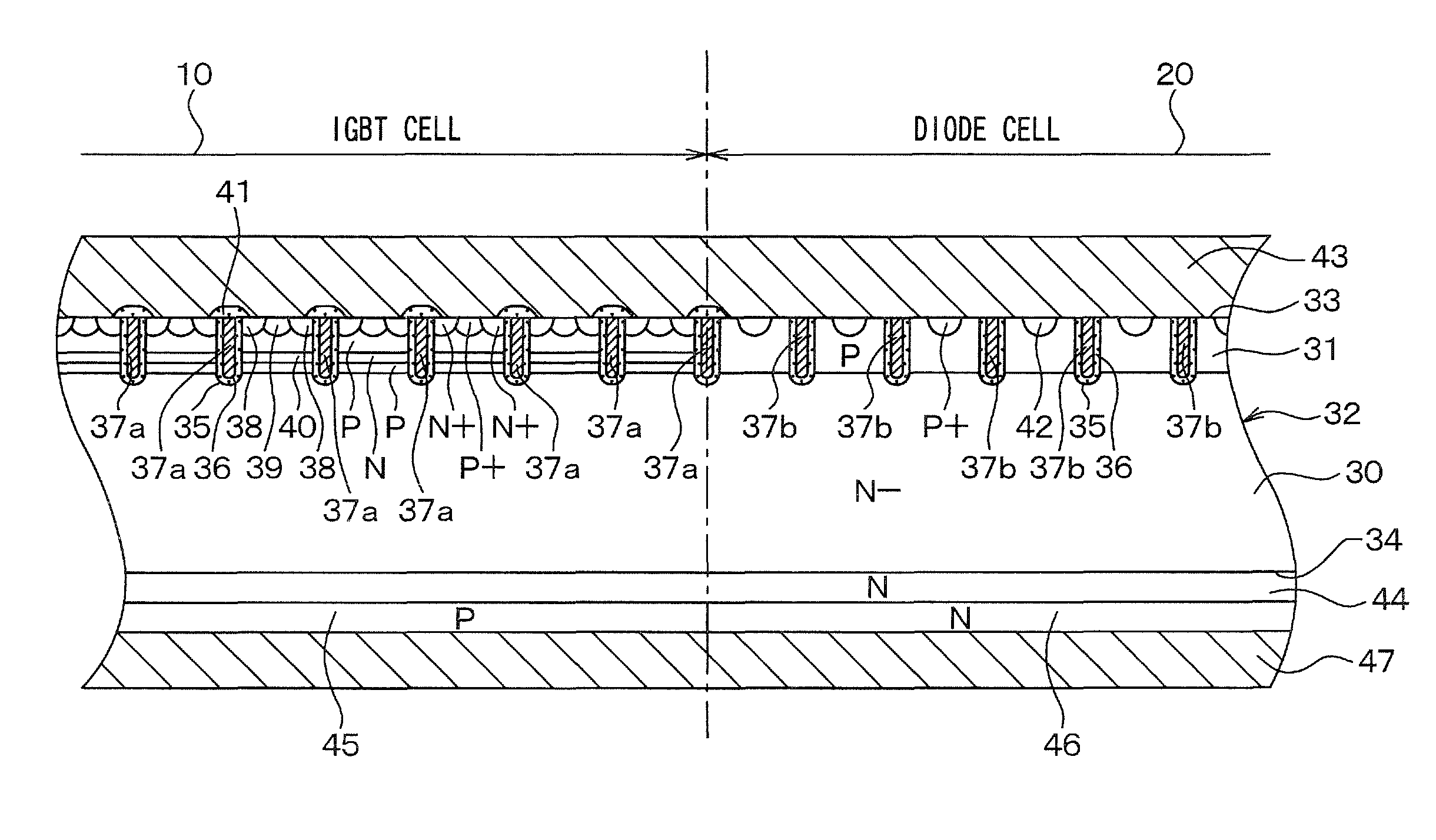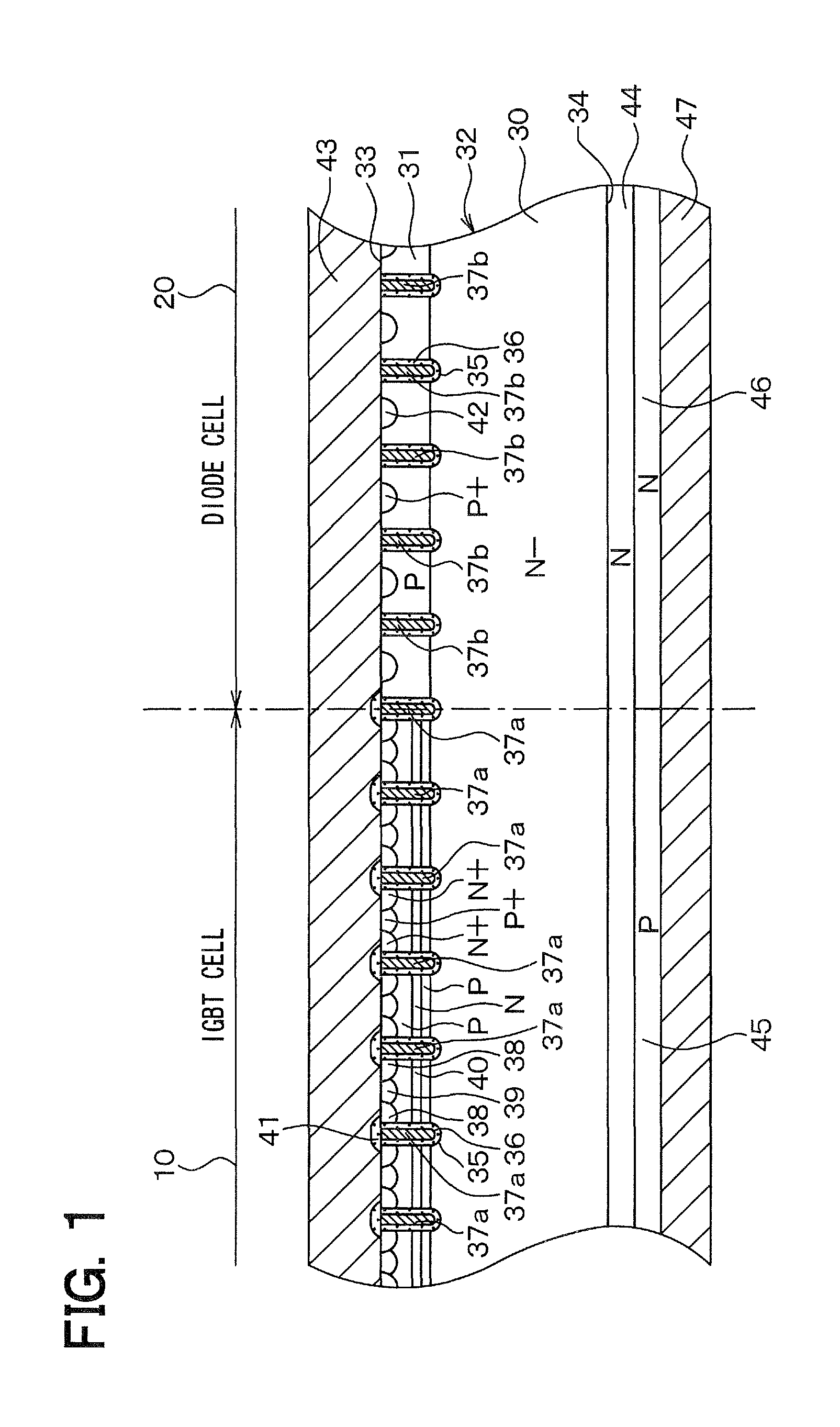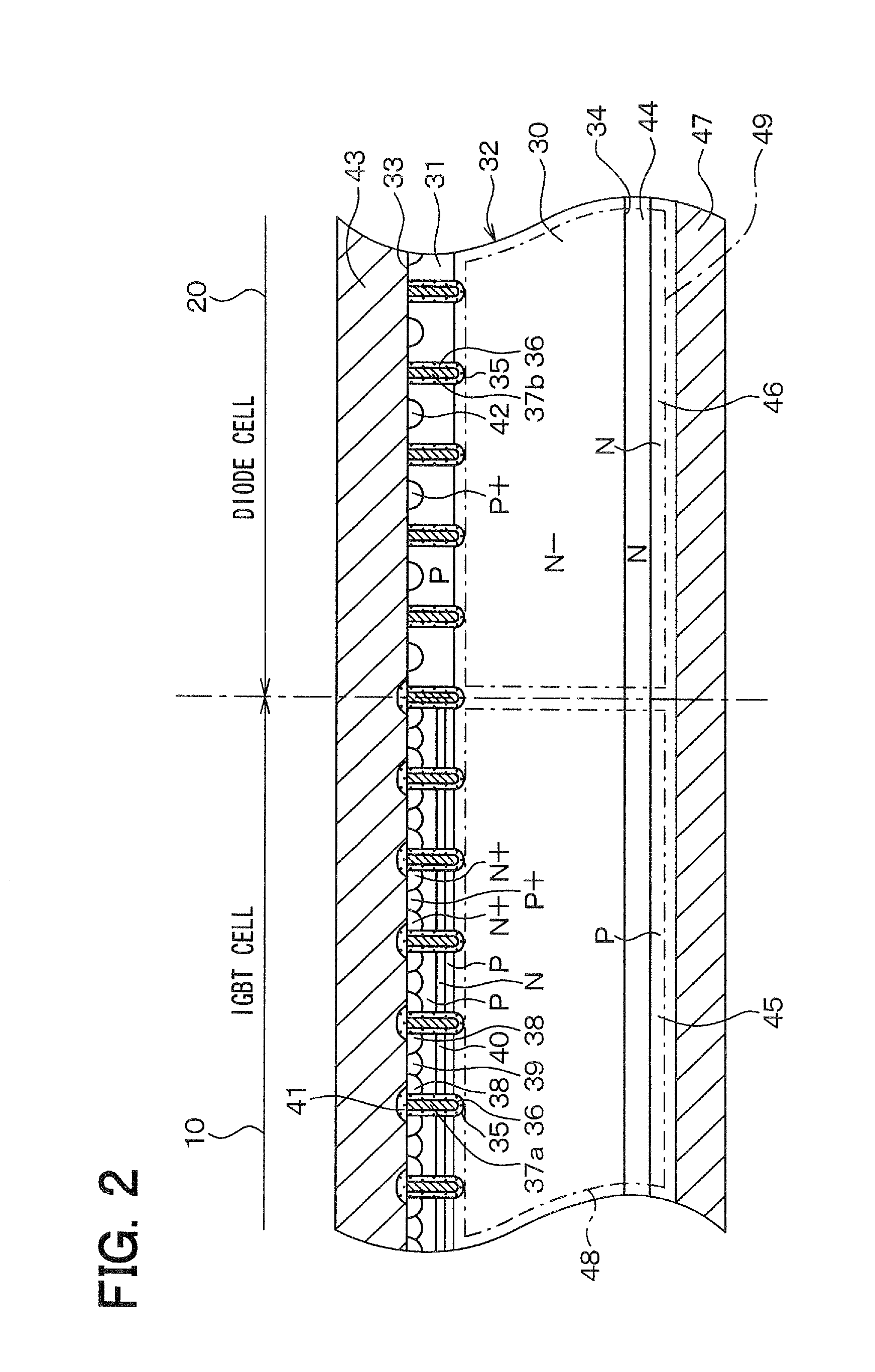Semiconductor device
a semiconductor device and semiconductor technology, applied in the direction of semiconductor devices, basic electric elements, electrical appliances, etc., can solve the problems of reducing the resistance of the drift layer, restricting the injection of excessive holes from the igbt cell to the diode cell, and reducing the steady loss of the igbt cell, so as to ensure the withstand voltage and reduce the field concentration , the effect of enhancing conductivity modulation
- Summary
- Abstract
- Description
- Claims
- Application Information
AI Technical Summary
Benefits of technology
Problems solved by technology
Method used
Image
Examples
first embodiment
[0054]A first embodiment of the present invention will be hereinafter described with reference to FIGS. 1 and 2. An insulated gate semiconductor device according to the present embodiment is, for example, used as a power switching device of a power supply circuit, such as an inverter and a DC / DC converter.
[0055]FIG. 1 is a cross-sectional view of a part of the semiconductor device according to the present embodiment. Referring to FIG. 1, the semiconductor device is a reverse conducting-insulated gate bipolar transistor (RC-IGBT) having an IGBT cell 10 and a diode cell 20 adjacent to the IGBT cell 10. The IGBT cell 10 forms a section in which multiple IGBT elements are formed, and the diode cell 20 forms a section in which a diode element is formed. Although not illustrated, multiple IGBT cells 10 and diode cells 20 are alternately disposed.
[0056]The IGBT cell 10 and the diode cell 20 commonly have a semiconductor substrate 32. The semiconductor substrate 32 has an N−-type drift laye...
second embodiment
[0086]A second embodiment will be described with reference to FIGS. 3 through 5. Hereinafter, a structure different from the structure of the first embodiment will be mainly described.
[0087]FIG. 3 is a cross-sectional view of a semiconductor device according to the present embodiment. FIG. 4 is a plan view of an outer portion of the semiconductor device according to the present embodiment. FIG. 5 is a cross-sectional view taken along a line Va-Vb-Vc in FIG. 4. In FIG. 5, the collector electrode 47 is not illustrated for the purpose of simplicity.
[0088]Referring to FIG. 3, the interlayer insulating film 41 is formed on the base layer 31 of the diode cell 20, in addition to the base layer 31 of the IGBT cell 10. The interlayer insulating film 41 covers ends (e.g., upper ends in FIG. 3) of the trench electrodes 37b. In the diode cell 20, therefore, the trench electrodes 37b and the emitter electrode 43 are electrically insulated from each other by the interlayer insulating film 41. For...
third embodiment
[0097]A third embodiment will be described with reference to FIG. 6. Hereinafter, a structure different from the structure of the second embodiment will be mainly described.
[0098]In the second embodiment, the trench electrodes 37b are electrically connected to the emitter electrodes 43 at the longitudinal ends of the trenches 35 through the emitter leading electrode 50. In the present embodiment, the trench electrodes 37b are connected to a control electrode 56, which is different from the emitter electrode 43, at the longitudinal ends of the trenches 35.
[0099]FIG. 6 is a plan view of a part of a semiconductor device according to the present embodiment. As shown in FIG. 6, the emitter leading electrode 50 and the gate leading electrode 53 are disposed in the similar layout to those of the second embodiment. Further, the control electrode 56 is disposed between the emitter electrode 43 and the gate metal electrode 54.
[0100]The control electrode 56 is separated from the emitter electr...
PUM
 Login to View More
Login to View More Abstract
Description
Claims
Application Information
 Login to View More
Login to View More - R&D
- Intellectual Property
- Life Sciences
- Materials
- Tech Scout
- Unparalleled Data Quality
- Higher Quality Content
- 60% Fewer Hallucinations
Browse by: Latest US Patents, China's latest patents, Technical Efficacy Thesaurus, Application Domain, Technology Topic, Popular Technical Reports.
© 2025 PatSnap. All rights reserved.Legal|Privacy policy|Modern Slavery Act Transparency Statement|Sitemap|About US| Contact US: help@patsnap.com



